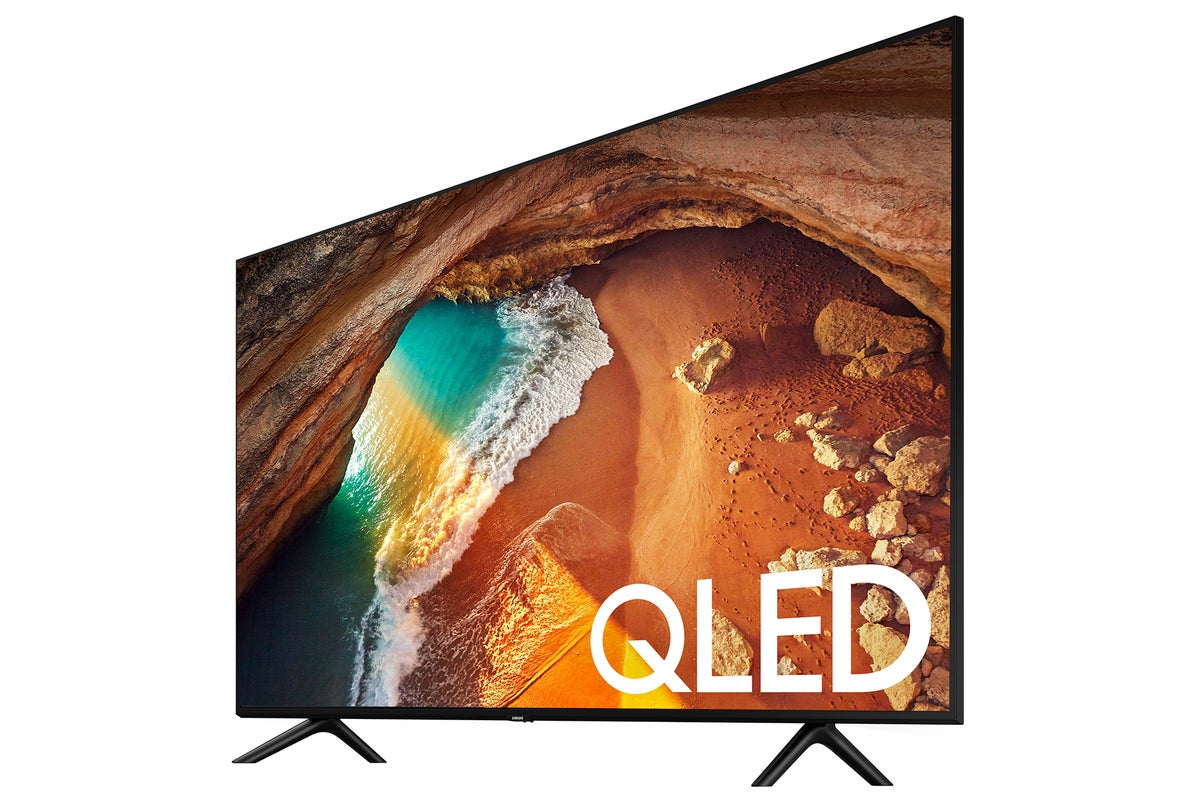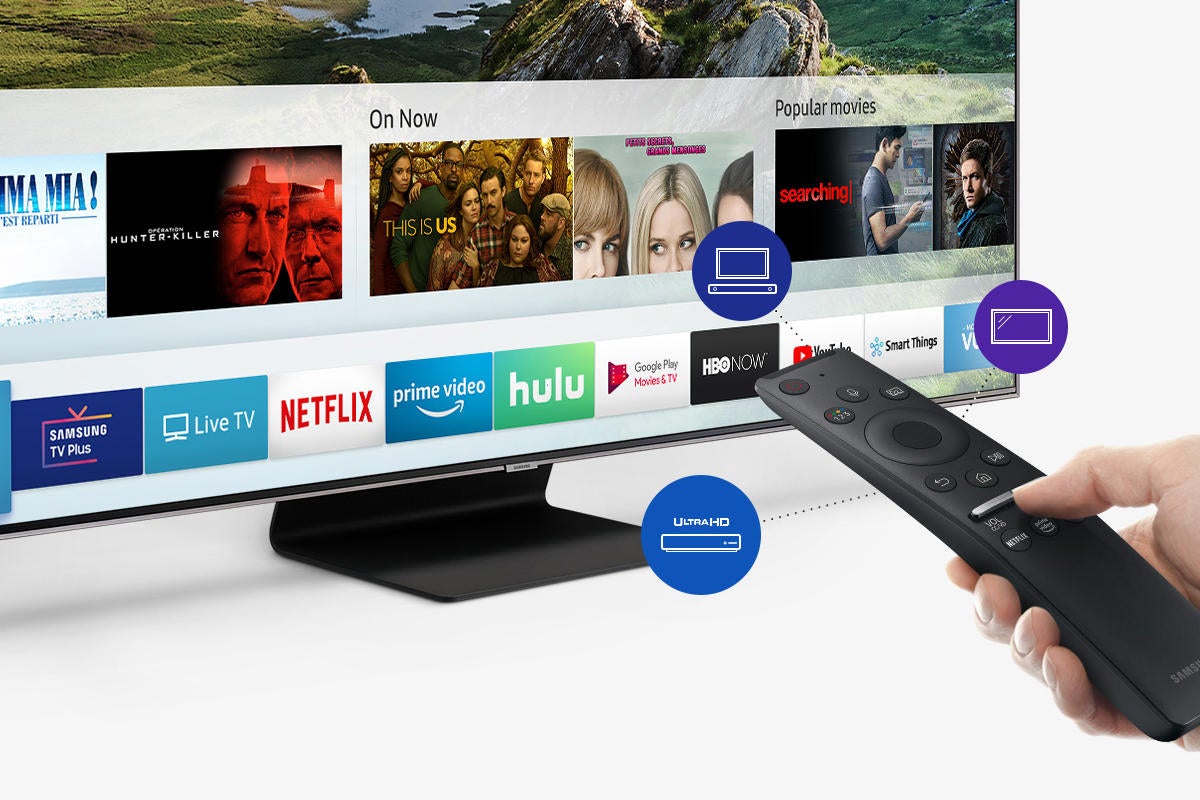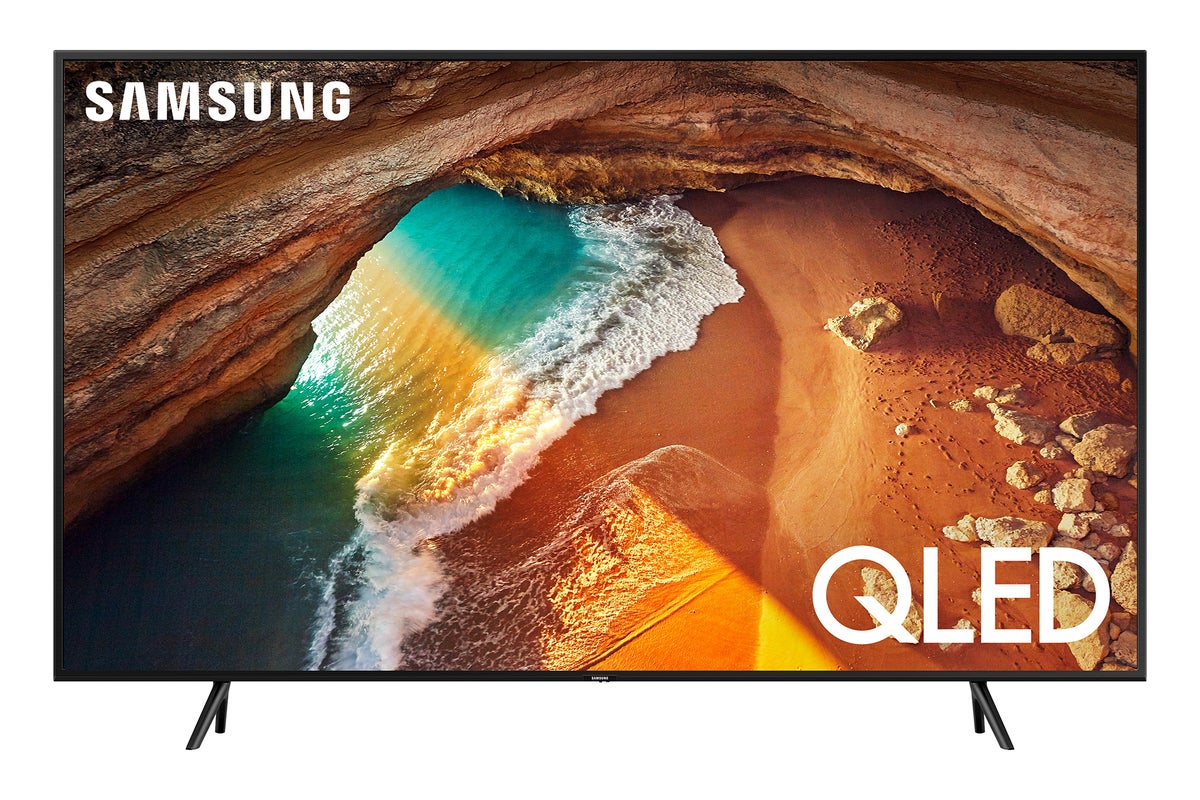Samsung Q60R 4K UHD smart TV review: The QLED color experience for less
Unlike the recently reviewed RU8000, this affordable TV offers Samsung's best color technology, although the brightness and motion aren't up to that of the pricier QLED's.

If you’ve envied the quantum dot color and interface perquisites offered by Samsung’s QLED TVs, but thought they were out of your price range, think again. The 55-inch Q60R reviewed here costs just $700, and it delivers the rich color and classy experience of its pricier QLED siblings. You can even get it in a 43-inch model for $500. Yes, for those who have asked, there is a QLED that will actually fit somewhere other than your living room wall.
You should, however, temper the enthusiasm I just encouraged—the Q60R’s image isn’t quite in the same league as Samsung’s other QLEDs in terms of brightness or detail. This is largely because it’s an edge-lit model, and not a direct array-lit set, as Samsung’s product description might lead you to believe (more on that in a bit). But the Q60R still delivers one of the best images in its class, and the lushest overall experience by far for the money.
Design and specs
The Q60R that I tested was a 55-inch class (54.5-inches measured diagonally) featuring 3840 x 2160 (4K UHD) resolution and 10-bit quantum dot color. It weighs roughly 43 pounds, including the two detachable legs. Sorry, there’s no iMac-like pedestal like you’ll find on the more-expensive Q90R.
Slim Type: Slim? Quantum HDR 4X? 100% Color Volume with Quantum Dot? Which of the dozen or so color spaces are we talking about? Yes, the TV is edge lit. It’s also “Motion Rate 240,” which means it’s a 120Hz panel. Or has traditionally. I wasn’t so sure after witnessing the motion compensation. Samsung and the rest of the industry need to have a meeting and stop the marketing nonsense.
The Q60R features four HDMI 2.0 ports, one of which supports the audio return channel (ARC), as well as two USB ports, coaxial (TV/cable/satellite), ethernet, optical digital out, and an RS-232C port. There’s also Wi-Fi and Bluetooth on board.
Remote and interface
I was expecting a motel-quality remote control given the Q60R’s price, but darned if the company didn’t include its classy One Remote, like those that ship with its pricier QLEDs. The One Remote is among my favorites: diminutive, clever, and nicely laid out. I’m not even going to complain about the advertising shortcuts. At this price, I’m not going to complain about the interface not returning to your last position, either. Actually, it’s amazing how much a lower price will ameliorate irritation.
 Samsung
Samsung
Samsung’s Smart Hub interface being browsed using the latest version of the company’s One Remote universal remote control.
The interface is the standard Smart Hub, bottom-row-of-icons that’s featured on all of Samsung’s better TVs. It’s easy to use, you can customize the order delete icons that aren’t relevant to you, and the ecosystem supports all the popular apps users look for, including, Apple TV+. There’s an electronic program guide, Bixby voice control, Alexa support, and of course machine learning of your preferences—if you’re into that sort of thing. DLNA streaming works great, the system recognizes when mass media is plugged in or devices are turned on, and setup starts scanning for TV channels even before you reach that step in the process.
The wallpaper and picture-frame modes are present, along with all the other little creature comforts that the QLEDs are known for. Overall, the Q60R offers by far the most lux experience in its price range, and a better experience than TVs costing considerably more.
Picture and sound
If you review enough TVs, you notice trends with image processing. Sony likes a cool, classy palette; LG opts for smooth and lush over detail; and Samsung likes to highlight color, contrast, and fine detail. The Q60R is no exception to the rule, though it’s edge lighting prohibits it from generating the peak brightness and perceived detail of its pricier siblings. I measured around 520 nits, which is roughly half what you’ll see from its big brothers. That’s still enough to generate the HDR effect, though it obviously won’t be as vivid as it would be with the 1,000- to 1,200 nits you’ll see from other QLED’s.
My Q60R hands-on took place in two stages, as per normal. I start with mundane material, such as over-the-air broadcast TV and light HDR that most viewers will be watching the vast majority of the time. During that initial phase, I was thinking QLED all the way. The processing was just about the same as the Q80R and Q90R for most things. The only difference I really noticed was that details didn’t quite pop the way they normally do. They are still very good, but…
Samsung
That’s largely attributable to the edge lighting and lower peak brightness, which I didn’t actually know about at that point. Edge lit didn’t really occur to me at this point, even with large areas of black. The backlighting is that good.
